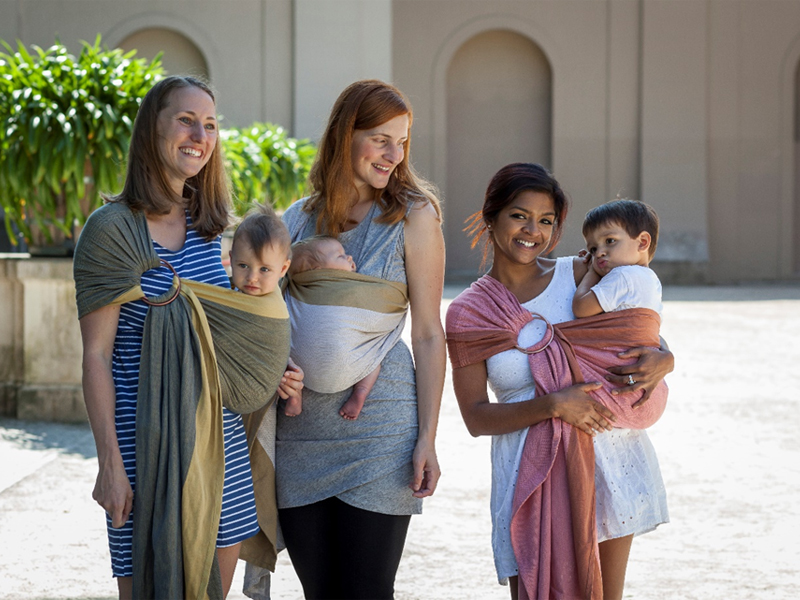
In more than 2/3 of the world’s population, babies are firmly tied to their mothers, dads or other caregivers. The reason for this is natural and trivial – humans are carriers. This term was mainly influenced by the behavioral biologist Bernhard Hassenstein in the 70s. He describes man as an “active carrier” which means that babies expect to be carried – evolutionary and biologically. Shown by their gripping and embracing reflexes as well as their spreading and squatting posture when you start carrying them.
Advantages for the little baby carrier and the parents
Moreover, carrying the baby has many other advantages: the attachment to mum and dad is strengthened and the development of the baby is promoted in many ways. When worn correctly, healthy hip development is promoted, babies explore their environment with all their senses, but can also cuddle up to mum or dad at any time and protect themselves in their security from sensory overloads. Being there with all your senses promotes the motor, cognitive and emotional development of our little baby carriers. But there are also many advantages for mum and dad: Baby carriers are often calmer and happier, parents have both hands free and can move freely.
The history of carrying babies in Europe
Nevertheless, wearing them today is still regarded as “alternative” in Germany. However, the fact that babies in babywraps and slings are increasingly once again shaping the cityscape is more a reflection of the past than a new invention- carrying babies was quite normal in Europe until 150 years ago. For example, babies and children were carried in hock coats, which were mainly known in Thuringia.
It all has changed by the time when the first factory pushchairs were produced in around 1840. But those were unsuitable for newborns because they were designed for sitting. Then, in 1880, the invention of the pram as we know it today followed.
Social views of carrying
What is particularly exciting here is the simultaneously changing social perspective on carrying babies. Mother and child were increasingly separated during the epoch of enlightenment, which also had an impact on their appearance in public space. The pram offered (in addition to the fact that the transport of prams was for the first time infrastructurally possible) the chance for mother and child to appear in public space and at the same time to distinguish themselves from the lower class (with stereotypically many children). Last but not least, the pram was also regarded as a status symbol.
Baby Carriers in 2019
The history of carrying a pram ranges from Egyptian high culture to the African continent, Greenland, the Amazon region and Papua New Guinea, and also has a long tradition in Europe, which is far too rarely told.
Unfortunately, prejudices about carrying, such as babies not getting enough air to breath, being pampered or learning to walk later, have established themselves. Fortunately, there are studies today that refute those prejudices. They found out
- that researchers consider the difference in oxygen intake when wearing to be insignificant
- that babies learn to walk faster by swinging their legs with the movement of their parents
- that it’s good to promote the emotional, cognitive and motor development of babys and children
- that through the bonding to the parents and the security of childhood it is easier for babys to explore the world on their own in future life
Carrying is a natural and great thing! We are happy to be part of the carrying world and accompany families with our ecological Mama Nuka baby slings and ring slings.
So let’s get into the cuddly sling!




